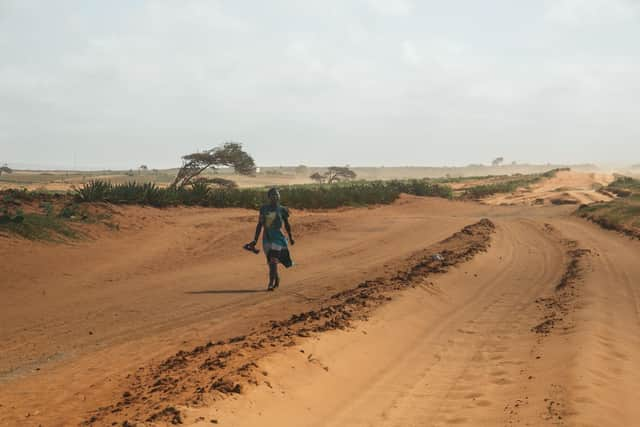COP26 climate change summit must respond to droughts that threaten famine on an unthinkable scale – Scotsman comment
This extraordinary drought means that most crops simply will not grow and, as a result, more than a million people in the Grand Sud region are living on emergency food aid, according to a Reuters report.
Others are forced to exist on locusts and cactus leaves – when they can find them. One mother-of-three told the BBC that her husband had died of hunger and she was now looking after two other children orphaned following the death of a neighbour.
Advertisement
Hide AdAdvertisement
Hide AdThe United Nations has said that Madagascar is on the brink of a “climate change famine” in a chilling warning about the future for many parts of the world. For this Pacific Ocean island is far from alone.
Much of southern Africa has seen temperatures rise at about double the average rate of global warming and poor rains are becoming an increasing feature in the east of the continent, with particular concern about the situation in Ethiopia.
Earlier this month, the United Nations warned that a total of nearly half a million people were “experiencing famine-like conditions” in Ethiopia, Madagascar, South Sudan and Yemen, with populations in parts of Burkina Faso and Nigeria also in the same situation.
The UN has launched an urgent appeal for $6.6 billion to help a total of 41 million people worldwide who are currently facing “emergency levels of food insecurity” and risk sliding into famine.


That number is only likely to rise as the world heats up. According to a World Food Programme analysis, if global warming reaches an average of 2C, this would see “a staggering 189 million additional people in the grips of hunger”.
“Large swathes of the globe, from Madagascar to Honduras to Bangladesh, are in the throes of a climate crisis that is now a daily reality for millions,” said the WFP’s executive director David Beasley. “The climate crisis is fuelling a food crisis.”
So when world leaders meet for the COP26 climate summit in Glasgow in less than two weeks’ time, they will not be dealing with some distant threat, but one that is already bringing death and despair to the inhabitants of vast swathes of the planet.
A message from the Editor:
Thank you for reading this article. We're more reliant on your support than ever as the shift in consumer habits brought about by coronavirus impacts our advertisers.
If you haven't already, please consider supporting our trusted, fact-checked journalism by taking out a digital subscription.
Comments
Want to join the conversation? Please or to comment on this article.
